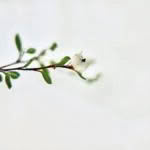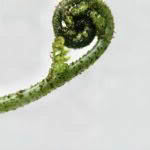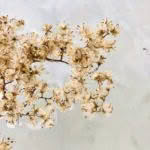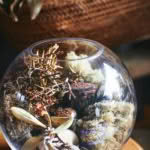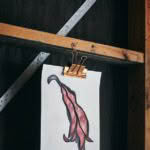Forest foraging sees nature, art and cuisine collide for this Danish artist
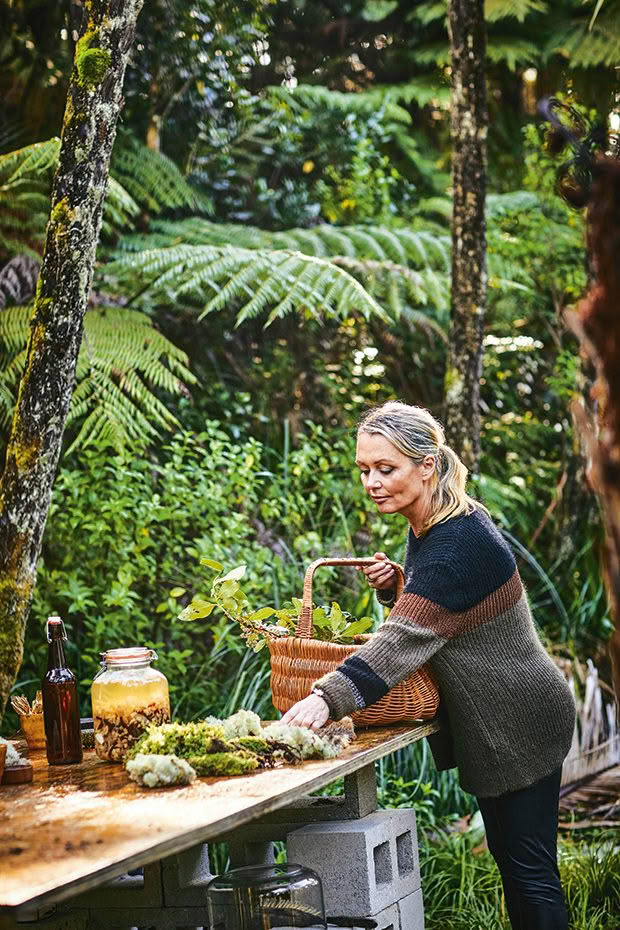
Artist and forest farmer Mamakan Oustrup Laureijs forages for native plants daily at her property, called Velskov, in Parau, West Auckland.
Gathering ingredients from the bush is an art for this Scandinavian-born creative.
Words: Claire McCall Photos: Manja Wachsmuth
Danish artist Mamakan Oustrup Laureijs operates where nature, art and cuisine collide. Foraging in the forest, crafting botanical sculptures in bulbous glass orbs, pickling tree-fern shoots: these patient, thoughtful missions populate her day. Her genre of art is difficult to qualify — but she calls it gastro-geography.
“All good art has a story behind it,” she says. And hers is international and original.

Hangehange has edible tips.
When, in 2018, her husband Quinten Oustrup Laureijs convinced her to relocate with their three children — Sofia (16), Coco (15) and Samuel (8) — from Singapore to the middle of the Waitākere bush, it was a culture shock to say the least. Moving from a densely populated metropolis to a four-hectare property with a view of trees, trees, more trees, and then the water, was life-altering.
Fresh from a successful exhibition at the Singapore Arts Biennale, where visitors entered a multi-sensory installation based on edible plants found within a square-kilometre city block, Mamakan initially found the land in Aotearoa to be empty. “The native plants were so different. I looked around and asked, ‘What can you eat here?’” Curious by nature, she started exploring.
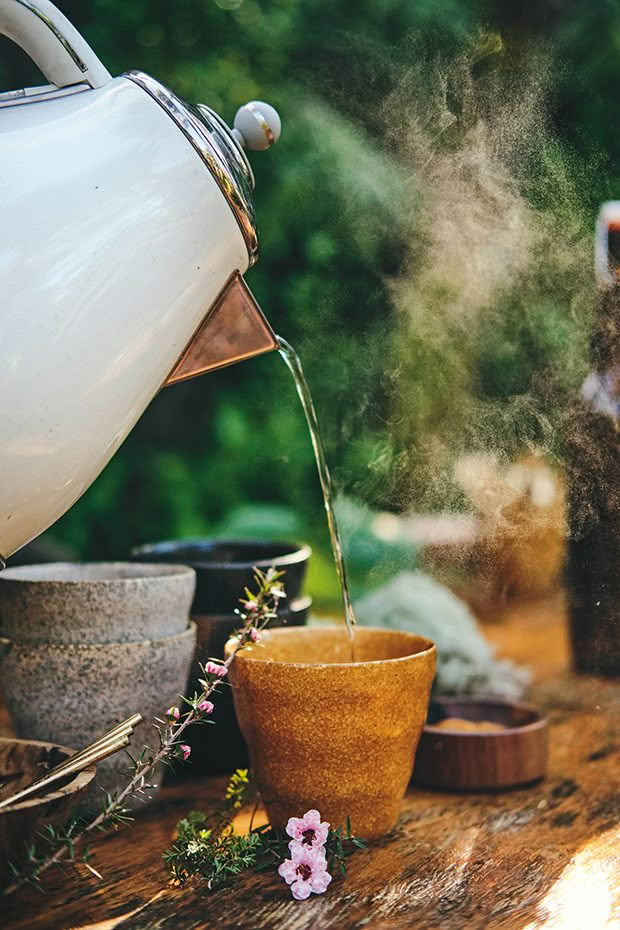
She uses her finds to make botanical art and concoctions such as mānuka bush tea.
Having bought “every single book on the native forest I could find” and enrolled in a course at Wellington Polytechnic to study the ecology and unique characteristics of native forests, she also enlisted the help of locals. There was the botanist from Auckland Museum who became her mentor, an ecologist from Auckland Council who freely shared his knowledge and the Māori ranger who helped with her understanding of the concepts of whakapapa and kaitiakitanga.
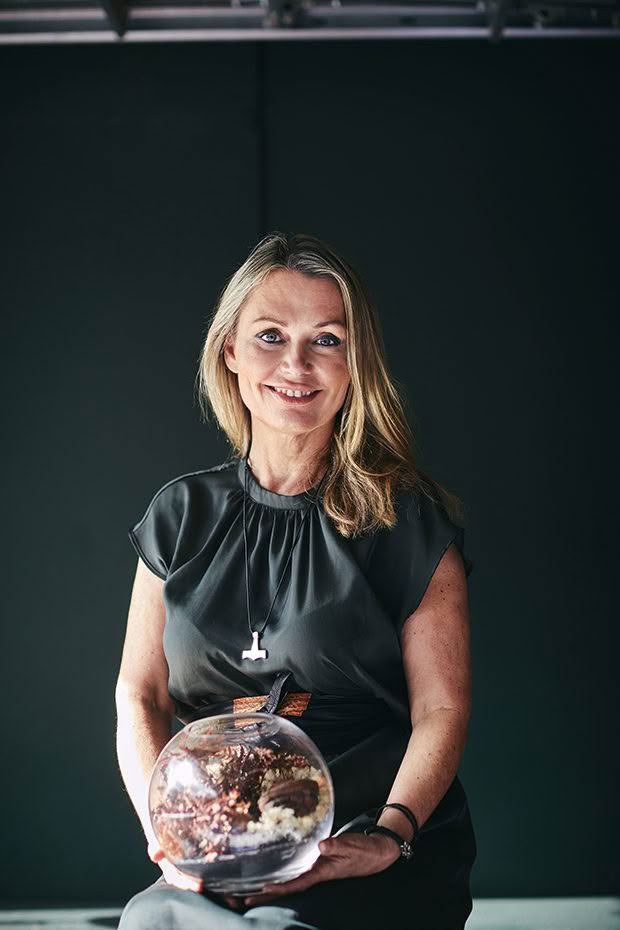
Mamakan’s obsession with this brave new world was fascinating and rewarding, albeit against a backdrop of lockdowns and torrential rain. Storms may have washed away the pathways through the forest, but they didn’t affect her resolve. After three years, she felt confident enough to test what she had learnt. “I hosted a few foraging expeditions for the parents and teachers at the Steiner school in Titirangi.”
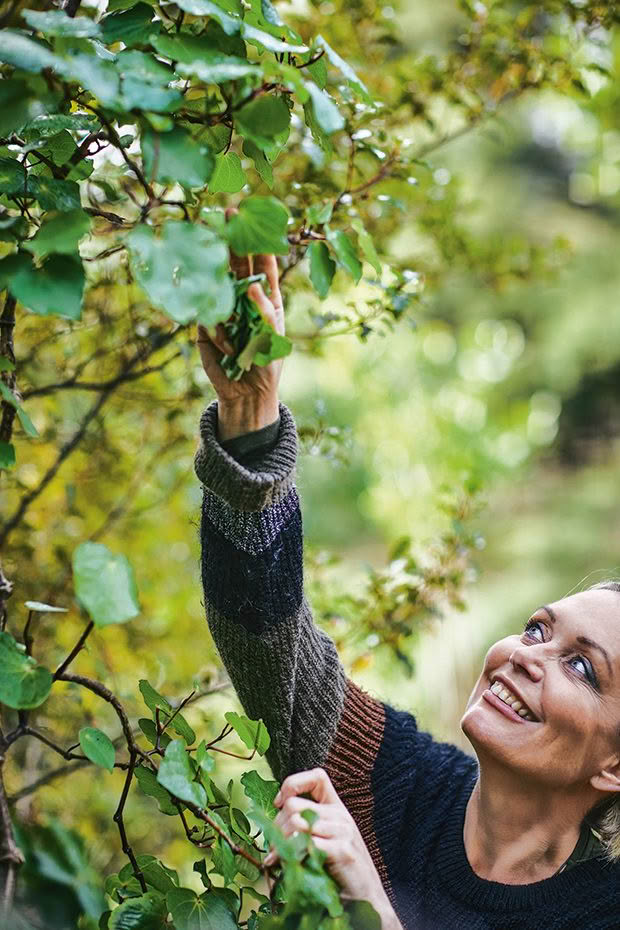
Kawakawa (Piper excelsum) is a relative of black pepper (Piper nigrum) and one of New Zealand’s most diverse edible native plants.
Sharing their slice of ranges — which they have named Velskov (meaning “well forest”) — and weaving in her art and food so that the experience appeals to all five senses is essential to Mamakan. Yet she is fully cognisant of the need not to appropriate. She is not tangata whenua. Instead, this artist, who can trace her lineage back 33 generations to the first king of Denmark, works respectfully in a space that encompasses the land of her birth and the place she now calls home.
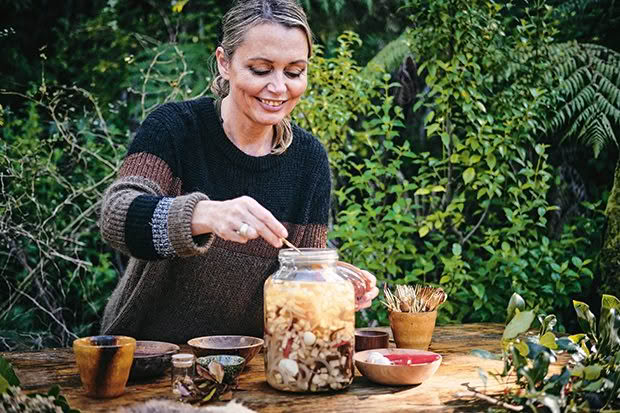
Alongside traditional visual mediums, where she draws, paints, photographs and sculpts botanical art from a studio attached to her home in Parau, she hosts events that bring her practice to life. “I love it when art becomes an experience — and when that experience becomes meaningful,” she says.
In the summer, Velskov is a living venue for guests to embark on a bush walk beneath the trees, learn about the flora and forage for finds that Mamakan then turns into a tasting feast with food and drink. “I am a very experimental cook. I approach cuisine like I approach art: as a discovery.”
While her 3D sculptures might contain elements such as sand that depicts the volcanic rock of Auckland’s west coast, foraged mushrooms imagined as mountains and sprigs of foliage that stand in as giant trees, her food hangs on flavour histories and inventions. She is both artist and alchemist. Lined up in the shed, in jars and bottles that sing with the sunlight filtering through the windows, are her latest concoctions — and they all embrace a Nordic/New Zealand influence. That might be wood ear fungi, pickled using her Danish aunty’s brine recipe but with mamaku fern tips and horopito. Or a selection of spirits — think vodka and gin — turned into fragrant botanical schnapps infused with rimu, karo leaves or kiekie flowers.
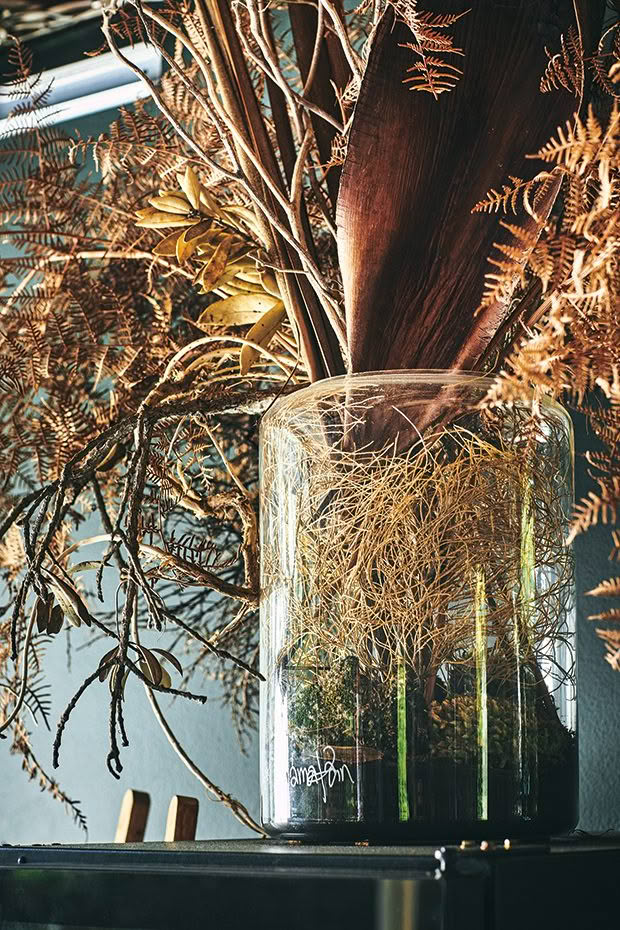
An installation from Forest Scapes, completed in collaboration with New Zealand fashion brand, Esse.
One of her favourite tipples, though, is mānuka honey mead with a champagne-like fizz, a vibrant celebration of the forest. Served cold, it’s tinged with kūmarahou “first bitter then floral” and has Viking roots. “In Scandinavia, we believe that mead was given to us by the gods,” says Mamakan. On the menu might be bubbas (golfball-sized doughnuts made with buttermilk), served sweet or savoury with a kawakawa pesto, or a kawakawa burger inspired by the traditional frikadeller (meatballs) and garnished with leaves from the hangehange tree, which, incredibly, have the flavour of spinach.
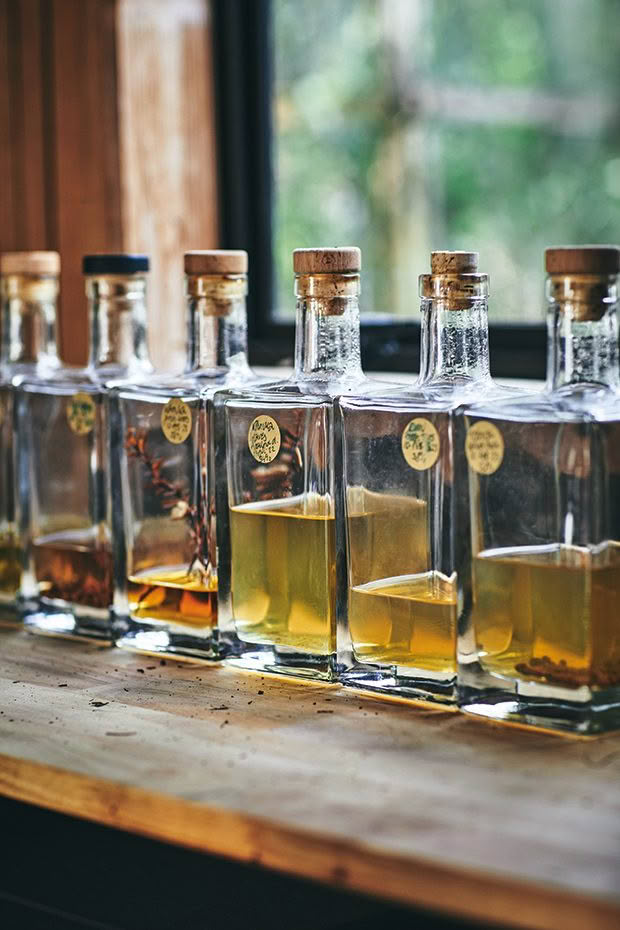
Tasting the forest, seated on benches made comfy with possum throws beneath the bush canopy, allows guests a special connection to place. Strictly speaking, some may not see this gastro-geographical journey as art — but that’s to their detriment. For Mamakan, the most authentic art is immersive and collaborative. “I love the surprise and joy of hosting people at our forest farm; it gets me up in the morning.”
MAKE A FORAGED FEAST
Put a native/Nordic spin on dinner after your next hike through the forest with these ideas from Mamakan.
Kawakawa Beef/Lamb Patty

Use kawakawa (Piper excelsum) to make a Nordic New Zealand-style burger patty. Harvest 1 fresh kawakawa leaf for every 100g of minced meat. Rinse the leaves and chop them into small pieces. Sprinkle them over the mince. Mix with eggs, breadcrumbs, onion, garlic and salt/pepper and shape into patties. Barbecue or fry the patties in half-butter/half-cooking oil.
Pickled Mamaku Fern
Harvest a fresh shoot of the mamaku tree fern (Cyathea medullaris). Remove the hairs and cut the shoot into cubes. Massage the fern with generous levels of salt and leave, covered, for a day or overnight in the fridge. Rinse off the salt and add the fern to your favourite pickling brine. If you like it spicy, add some native horopito, chilli and garlic, which all work well within salty vinegar.
Hangehange garnish
Hangehange belongs exclusively to Aotearoa. Thankfully, this shrub is easy to grow in a native kitchen garden, especially in the warmer parts of the county. Harvest a few branches of fresh hangehange (Geniostama lingustrifolium) leaves, rinse them and add the leaves to a salad or as lettuce in a burger. Those short on time can harvest a few hangehange branches and leave them in water for later. They will keep fresh for a couple of days.
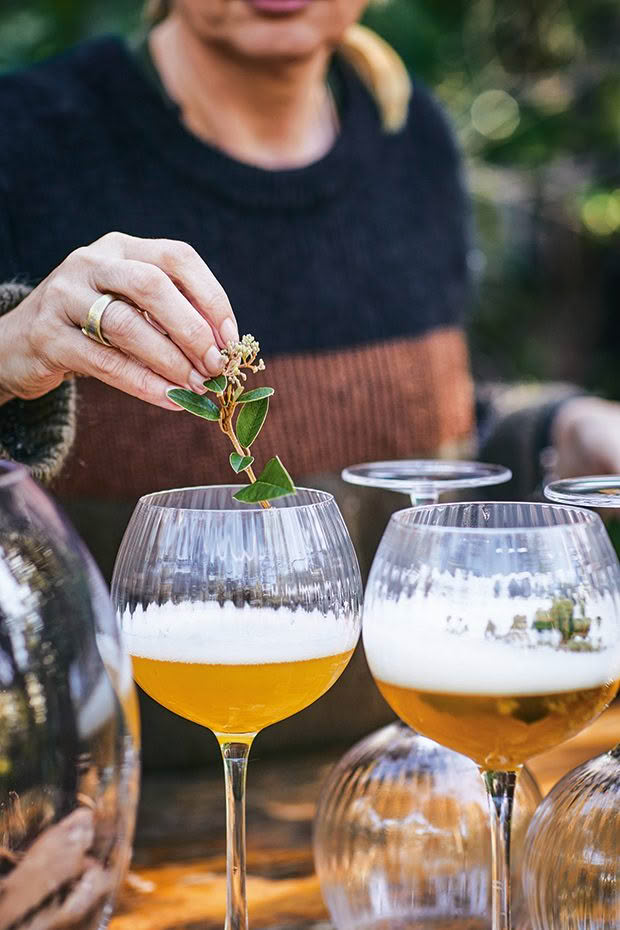
She uses fresh kūmarahou to garnish her honey mead.
Native Bush Honeycomb Mead with Kūmarahou
Sweet honey mead works perfectly with the bitterness of native kūmarahou. In a large glass jar, add 1kg of honeycomb to 4-5 litres of rainwater and 1 tablespoon of freshly chopped kūmarahou leaves. Leave the mead for 2 weeks with the jars unsealed, stirring at least 3 times daily. After a couple of weeks, filter and bottle the mead. Keep it cold for another couple of weeks to enjoy. If you are lucky, the mead will fizz with bubbles.
Mānuka/Kānuka Bush Tea

Native bush tea is an excellent way to cleanse and flush out the stresses of a busy day. Put one or two small stems of fresh mānuka (Leptospermum scoparium) or kānuka (Kunzea erocoides) in a teapot. Steep in boiling water for 5-10 minutes and enjoy the cleansing drink. This native bush tea is also nice served iced with a spoonful of mānuka honey. mamakan.com
